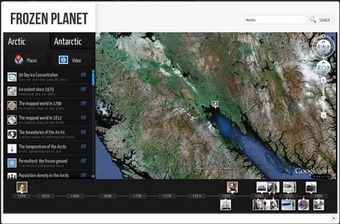Fifty million to 200 million years from now, geologists expect Earth's continents to smash together into one big supercontinent, just as they've done repeatedly in our planet's distant past — and a new computer model suggests that the Arctic Ocean...
This graphic displays the fluidity of the plate tectonic systems, and instead of thinking about what happened during the era of the dinosaurs, looking into the future provides an interesting perspective the dynamism of Earth systems (Disclaimer: this is one possibility on what might happen, there are other possible outcomes). In human geography, I use this map to discussion the concept of region: regions are not static, but the the Earth is put together is (sometimes literally) shifting beneath our feet.



 Your new post is loading...
Your new post is loading...









